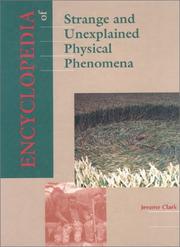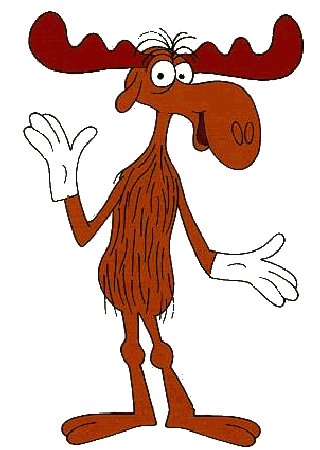Unexplained! By Jerome Clark

I don't think it's a secret that I enjoy a good horror story, even a few bad ones, but being that this is the Halloween season, I try to go a bit farther to enjoy things than regular folks because it's Halloween all year round with me, and I want to make the season really mean something. My solution is to seek out material which offers a bigger and more compelling jolt.
Basically, I look for stuff which feels real. I don't want to get into the "should fantasy/horror attempt to be realistic" debate, but theres no better way to satisfy those cravings outside of fiction for ''something more'' than to pick up a book on the paranormal that is purportedly based on real events. Cryptozoology, ghost hunters, mediums, Charles Fort's stuff, you name it, I've probably read it. And as far as I'm concerned, the best book ever written on the subject of the "unexplained" is Jerome Clark's well, er...Unexplained! 347 Strange Sightings, Incredible Occurences, and puzzling Physical Phenomena.
It's by no means not an academic work, in fact, there's a variant edition that is in college/high school textbook format, but it's hard to find a book that treats the subject matter seriously and in a non-anectdotal way(like Readers Digest's Mysteries of the Unexplained or the fun but juvenille Strange Stories and Amazing Facts) that is also entertaining. This book has plenty of entertainment to spare, as well as some gripping details and factual evidence that, when dealing with some of the creepier subjects, the evidence at hand is enough to really give you that blood-curdling feeling that the best horror fiction does. After all, the events described herein literally could have happened in real life and not in a shitty Blair Witch sort of way.


The other editions.
Part of what makes Clark's writing style fun is how maturely he approaches the subject, neither dismissing damning evidence with some stupid ass explanation like "It was swamp gas" or screaming "It's a Conspiracy!' at every turn while wearing a tin-foil hat. No, he socks it to the believers and disbelievers equally. For example, when describing in the introduction the case of a reliable witness who reported seeing a giant ape in the woods but was rebuffed by being told he saw a moose, Clark replies:
"If we allow ourselves to believe(still in the abscence of scientific evidence to the effect) that at times, even under what are normally viewed as good viweing conditions, a moose can look like an ape, we will only be stymied if we try to employ this identification in the many places in the United States where similar 'apes" have been reported and where moose(or in many cases, wild mammals larger than deer) do not exist."

Great point. He also cites how many sightings of various phenomena, dismissed as hoaxes or people looking to capitalize on a popular legend, are often made by people who, in their lifetimes and cultures, could not possibly have been familiar with the legends surrounding the phenomena, yet still gave damn good descriptions of what would otherwise be familiar monsters in other cultures.
Like I said though, he still slams the blind believers just as hard, even going so far as to say that vast numbers of accounts and even photographic evidence are actually better evidence of a hoax than no evidence, since people rarely leave their houses with cameras. He also does his best to examine evidence used as gospel proof and whether it really fits. For example; he produces records of sightings of the Loch Ness Monster that are used by fans as gospel evidence, and points out how the ''evidence" in question describes radically different creatures than the classic Plesiosaur image, in some cases, some of the monster sightings in those old records were of creatures that had no connection to water whatsoever or were not even located in the same vicinity near the Loch. He also goes into detail with the various land sightings of the creature, which in fact, made up the vast majority of the early sightings, showing how, if the monster is real, it sure as hell isn't a plesiosaur if it can come on land, leave fur traces, and go as far as the woods many miles anyway.
When he's on the believers's side though, I like how Clark attempts to tie together various disparate phenomena. Really, who'd have thought that Bigfoot, Springheel Jack and Devil Dogs all had ties to UFOs? There's more evidence of that than any sane person would care to imagine.
Many of the accounts collected here or retold by Clark are eerie enough in themselves to make great scenes for a horror movie or short story:
"As he walked down an isolated country road near Barron, Wisconsin, one summer night in 1919, 13-year old Harry Anderson saw something distinctly odd. Twenty little men, trooped in single file and heading in his direction, were visible in the bright moonlight. Even as they passed him, they paid him no attention. They wore no shirts, they were bald, and their skin was pale white. Though all were making ''mumbling'' sounds, they did not appear to be communicating with each other. Terrified, Anderson continued on his way and did not look back. The bizzare encounter remained vivid in his memory for the rest of his life."
No shit? According to the book, poor Harry had no familiarity with the myths of fairies and leprechauns, so without even a supernatural explanation, what in the name of fuck was he supposed to think? Harry's encounter was supposedly first recorded in the magazine(?) Living Age in 1938. Would love to get my hands on a copy so as to read his actual account.

Other accounts in the book, some quoted directly, are pretty damn exciting as well. There are these two 1873 recordings of encounters with the monster of Lake Champlain from the Whitehall Times that are reprinted verbatim here, and both would put any pulp magazine writer to shame with their vivid prose. I'd type 'em up, but I'm lazy. Buy the book for yourself just to savor the awesome.

One weird thing about the book is the chapters. Not how they're arranged, which is alphabetically, but how each is marked at the top of the page with an icon depicting a different phase of the moon. I've looked for a pattern as to why they're placed in the chapters they are, but have come up with nothing. Probably some sort of in-joke or an unusual aesthetic choice.
Basically, this is a great book, fun, informative, humorous, skeptical and more than occasionally unnerving. Ideal reading or someone looking for something more grounded in reality than usual for Halloween, and essential reading for would-be scholars of the paranormal.